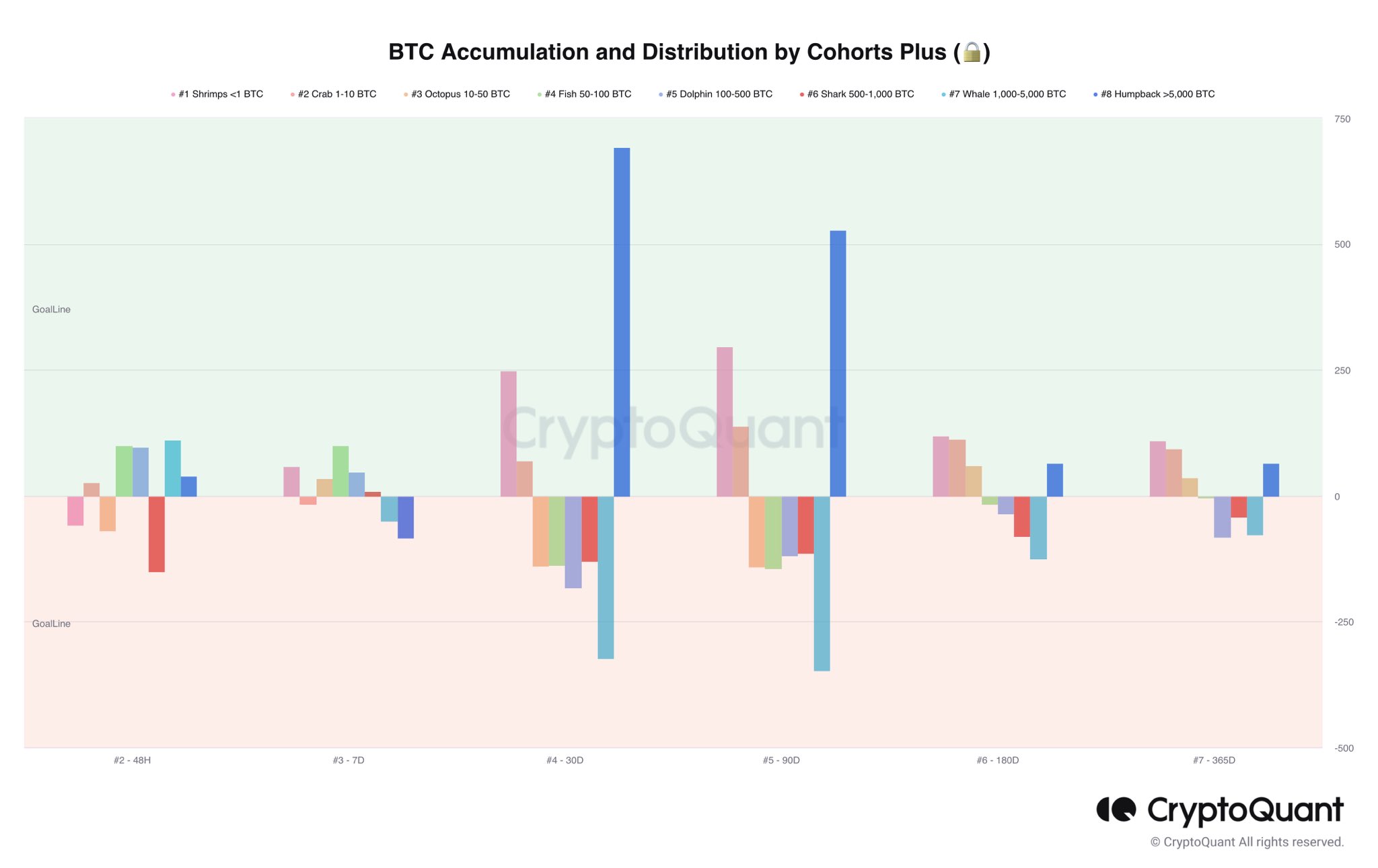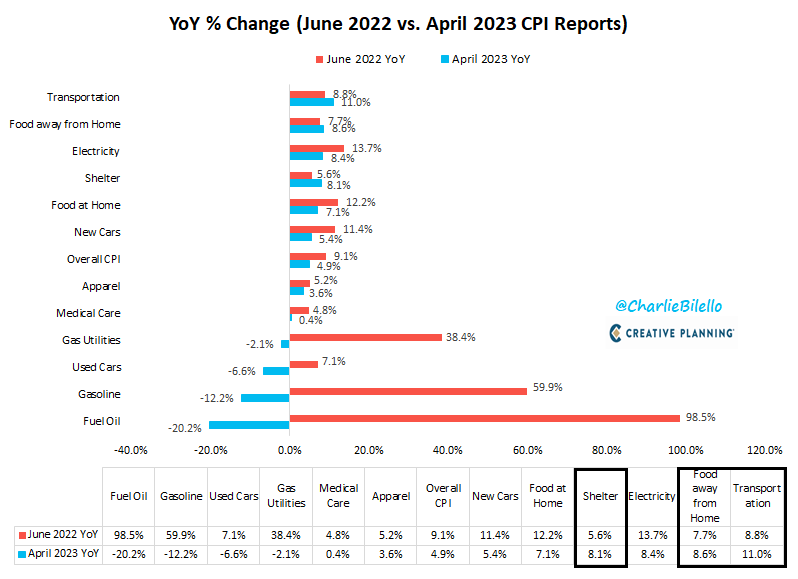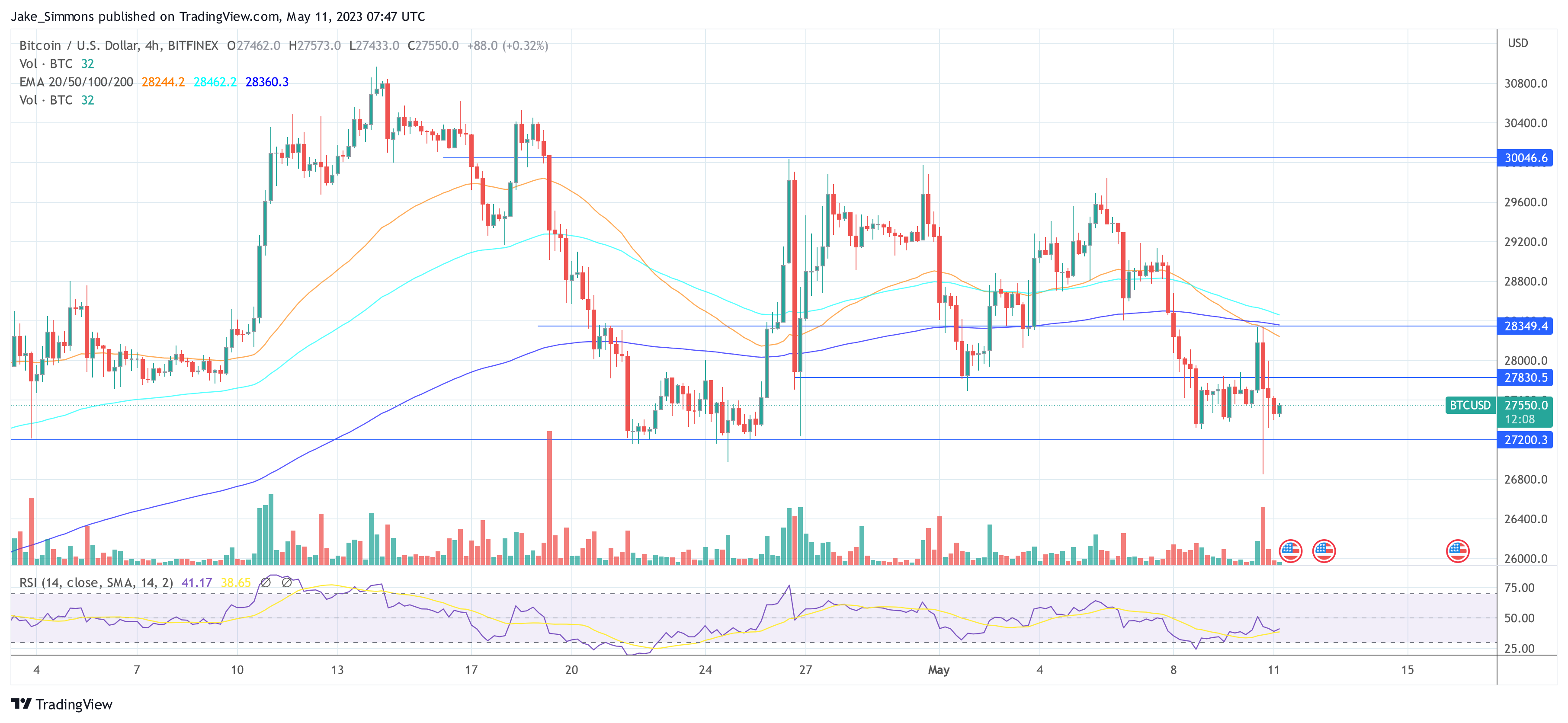The Bitcoin price took a major hit yesterday despite a positive surprise in the US Consumer Price Index (CPI), following a rumor that the US government sold 9,800 BTC related to Silk Road. Since then, the market has struggled to recover from the shock.
However, one group of investors is showing no fear: whales. The big investors with a lot of money are considered one of the most reliable indicators of when is a good time to buy Bitcoin. On-Chain analyst Axel Adler stated, “BTC Accumulation and Distribution – no changes. Large players continue to buy BTC from smaller players.”
The chart below shows that investors with more than 5,000 BTC have been buying large amounts (alongside smaller investors <10 BTC) over the last 30 and 90 days, while all other cohorts have been shedding BTC.

What Do Bitcoin Whales Know?
Of course, it can only be speculated what the Bitcoin whales know that others do not. But the fact is that Bitcoin saw an upward trend yesterday after the CPI release, until the fake news (manipulation?) about the US government selling Bitcoin broke.
But, yesterday’s CPI print could have significantly more implications than are apparent at first glance. For some time now, the market has been betting on an early pivot by the U.S. central bank (Fed). The market is currently betting on three interest rate cuts by the end of the year (3x 25 bps to 4.25-4.50%).
While the U.S. banking crisis reinforces this bet, whales may have been calling the Fed’s bluff for some time. As NewsBTC editorial director and technical analyst Tony Spilotro recently pointed out via Twitter, the Fed (and the masses) are relying on lagging indicators.
Remember: CPI is a lagging indicator. The stock market is a leading indicator.
— Tony "The Bull" (@tonythebullBTC) May 10, 2023
Charlie Bilello, chief market strategist at Creative Planning, stressed on Twitter that the consumer price index in the U.S. has declined from a high of 9.1% in June last year to 4.9% in April. According to the renowned analyst, the reason for this decrease is the lower inflation rates in heating oil, gasoline, used cars, gas supply, medical care, clothing, new cars, food at home and electricity.

Inflation rates in transportation, out-of-home food and lodging have increased since last June, but declines in the other major components have offset those increases. The fact that the U.S. core inflation index (excluding food/energy) still stands at 5.5% year-over-year is primarily due to shelter CPI (+8.1% year-over-year), according to Bilello:
Why was Shelter CPI still moving higher while actual rent inflation has been moving lower for some time? Shelter CPI is a lagging indicator that wildly understated true housing inflation in 2021 & first half of 2022.
As Biello added, after 25 consecutive increases (on an annual basis), the shelter CPI showed its first decline in April, from 8.2% in March (the highest level since 1982) to 8.1% in April. If shelter inflation finally peaks, it will have a big impact on the overall CPI, as shelter accounts for more than one-third of the index.
Deflation Coming Fast?
This opinion is echoed by Fundstrat’s head of research, Thomas Lee. In an interview, Lee said that inflation will come down faster than most people think and that will make the Fed’s pause more comfortable for investors because it will lead to a soft landing.
For Lee, this is one of the key implications of yesterday’s April CPI report. Carl Quintanilla of Fundstrat added:
40% of the CPI basket (by weight) is in outright deflation. This is a huge development. Housing and Food are not ‘deflating’ even though real-time measures show this. That would add another 50% or so when they do.
For Bitcoin, a rapid drop in inflation rates and a soft landing as predicted by Lee could be extremely bullish. Whales could use this phase to accumulate while retail investors are selling out of fear of a looming recession with high inflation.
At press time, the Bitcoin price traded at 27,550, back in the lower range.











